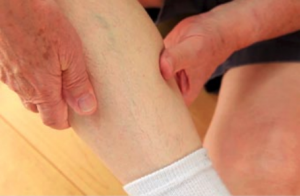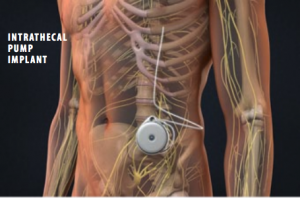Complex Regional Pain Syndrome is a type of chronic, long-lasting pain. In most cases, it develops in an arm or a leg that you have previously injured[1]. CRPS causes severe pain and it may spread. Complex regional pain syndrome is uncommon. Treatment is most effective when started early. In such cases, improvement and even remission are possible[2].
Causes
We don’t know the exact cause of CRPS. It’s an abnormal response that your body has to being hurt[3]. It seems to be a type of overreaction, almost like an allergy. It can develop after any kind of trauma, such as a sprain, a fracture, a burn, or a medical procedure. CRPS may involve your immune system along with your nervous system. The genes you have inherited may also play a role.
Symptoms

If you have CRPS, you may feel burning pain, or pins and needles. The pain may spread. If you hurt your hand, for example, it may spread to your entire arm. It may even spread to your other arm. Your skin may change colors, and it may feel warm or cool. It may be so sensitive that even a light touch hurts. You may have other issues, such as abnormal sweating, a change in hair or nails, or problems moving your limb.
Treatment

If you are dealing with this pain, you know how frustrating it can be. You hurt, and you don’t know why. You feel like you should have healed by now, and no one can tell you why you aren’t getting better. Although there’s no cure for CRPS, there are a few things you can do to get some relief.
Treatment for CRPS can involve physical therapy, injections, implantable therapy, and medications. Visiting a therapist is also recommended to help you deal with depression and anxiety[4]. Take an active role in your care. Schedule regular checkups. Develop a good relationship with your doctor. Ask questions when you don’t understand something. Make sure to follow your doctor’s advice.
Injections
You may benefit from an injection if you are suffering from CRPS. If CRPS is present in one or both of your arms, you could try a Stellate Ganglion Block. This is an injection that numbs branches of nerves in your neck. This helps doctors find and treat a number of problems linked to the nerves. Treatment may require a series of injections.
If CRPS is present in one or both of yours arms, you could try a Lumbar Sympathetic Block. Similarly to a Stellate Ganglion Block, this is an injection that numbs branches of nerves in your lower back. The sympathetic nerves travel along both sides of your spine. They are associated with a wide range of functions that you don’t consciously control. These include your circulation, digestion, and sweat production.
Spinal Interventions provides these interventional pain management treatments with our primary emphasis on minimally invasive procedures. We perform these injections in our in-office suites, which contain C-arm fluoroscopy, lead-lined walls, and patient monitoring equipment. Our experienced physicians are board-certified in anesthesia and pain medicine. This allows patients to receive safe, appropriate sedation when needed.
Implantable Therapy

If injections don’t give you lasting relief, you might want to try implantable therapy such as an intrathecal (IT) pump or a spinal cord stimulator (SCS). These are devices implanted under the skin and modulate pain pathways in the spinal cord. An IT pump uses small amounts of medication applied directly to the intrathecal space (the area surrounding the spinal cord) to prevent pain signals from being perceived by the brain[5]. Pump candidates include people for whom conservative treatments have failed and surgery is not likely to help. Spinal Interventions generally uses Medtronic as our pump vendor.
A SCS uses electrical impulses to relieve chronic pain of the back, arms, and legs[6]. It is believed that electrical pulses prevent pain signals from being received by the brain. Another form of a SCS is Dorsal root ganglion (DRG) stimulation. This treats chronic pain in your trunk or legs. This therapy targets a bundle of nerve cells called a “dorsal root ganglion”. DRGs are found on your spinal nerves, where they branch away from your central nervous system. Pain signals from all over your body must pass through a DRG on the way to your brain. A DRG stimulator can help you control this pain. Spinal Interventions uses a few different SCS device companies such as Abbott, Medtronic, or Boston Scientific, depending on the patient’s specific pain.
Our doctors at Spinal Interventions have been thoroughly trained in both of these treatments and have performed hundreds of these surgeries with great benefit. Because these are more invasive surgeries, they are not our first line of treatment. Consult your provider for more information.
Focus on Your Health

Eat nutritious meals. Your doctor may recommend a diet designed to combat inflammation in your body. Physical activity promotes circulation to relieve painful inflammation in joints and muscles[7]. Before starting any exercise programs, make sure to consult your physician about what the best plan is for you. Work on lowering your stress levels. Stay positive! Reach out to others and establish a support system.
Don’t let chronic pain interfere with your life! If you’re dealing with chronic pain, you know how debilitating it can be. Don’t let pain keep you from doing the things you love. Take the first step to living pain free and call Spinal Interventions today at (801) 223-4860 for a consultation.
[1] https://viewmedica.com/vm/index/brochure/6793/complexpainsyndrome/en
[2] https://www.mayoclinic.org/diseases-conditions/complex-regional-pain-syndrome/symptoms-causes/syc-20371151
[3] https://www.ninds.nih.gov/Disorders/Patient-Caregiver-Education/Fact-Sheets/Complex-Regional-Pain-Syndrome-Fact-Sheet%20#What%20causes%20CRPS?
[4] https://www.psychiatrictimes.com/depression/complex-regional-pain-syndrome
[5] https://viewmedica.com/vm/index/brochure/6793/pumpimplant/en
[6] https://viewmedica.com/vm/index/brochure/6793/stimimplant/en

